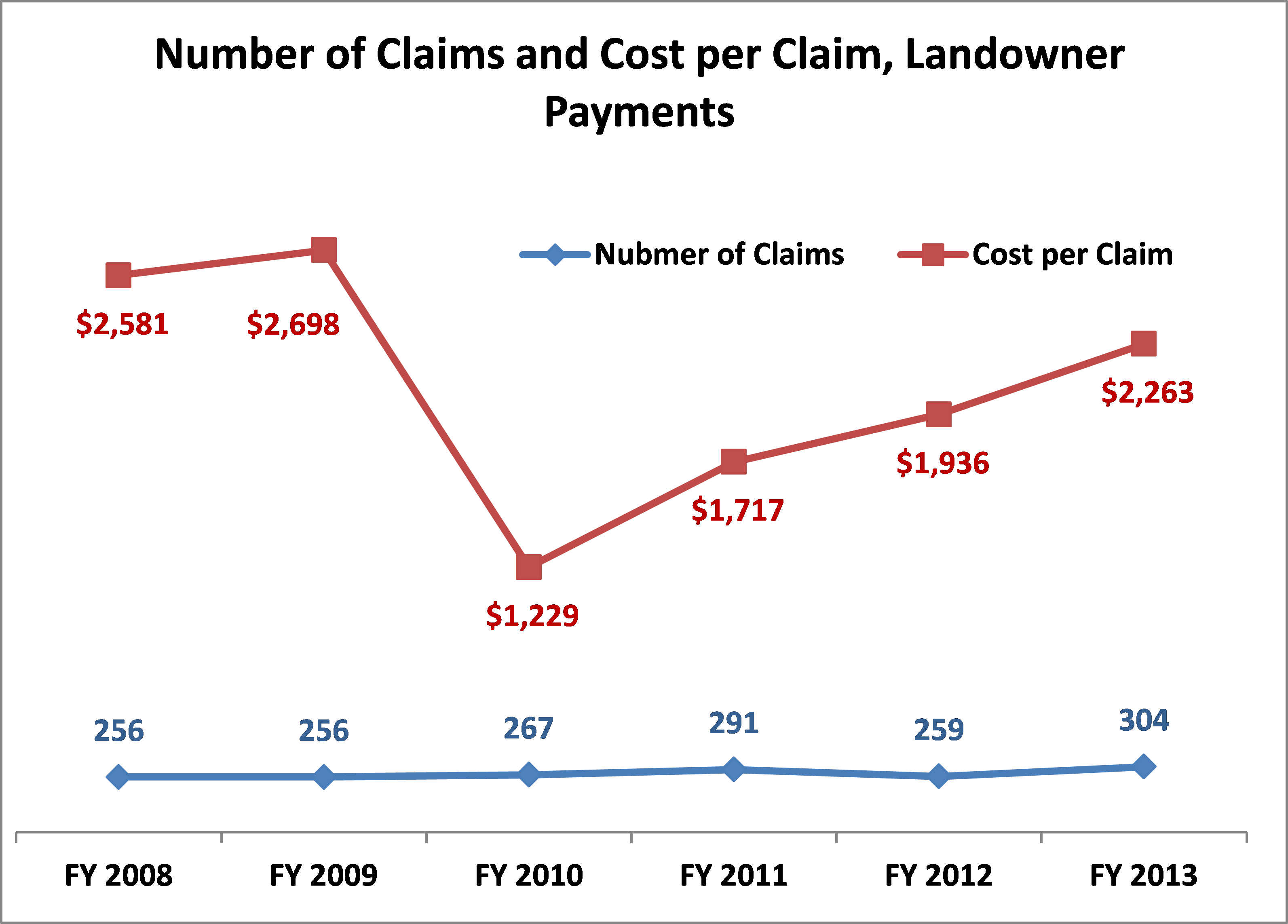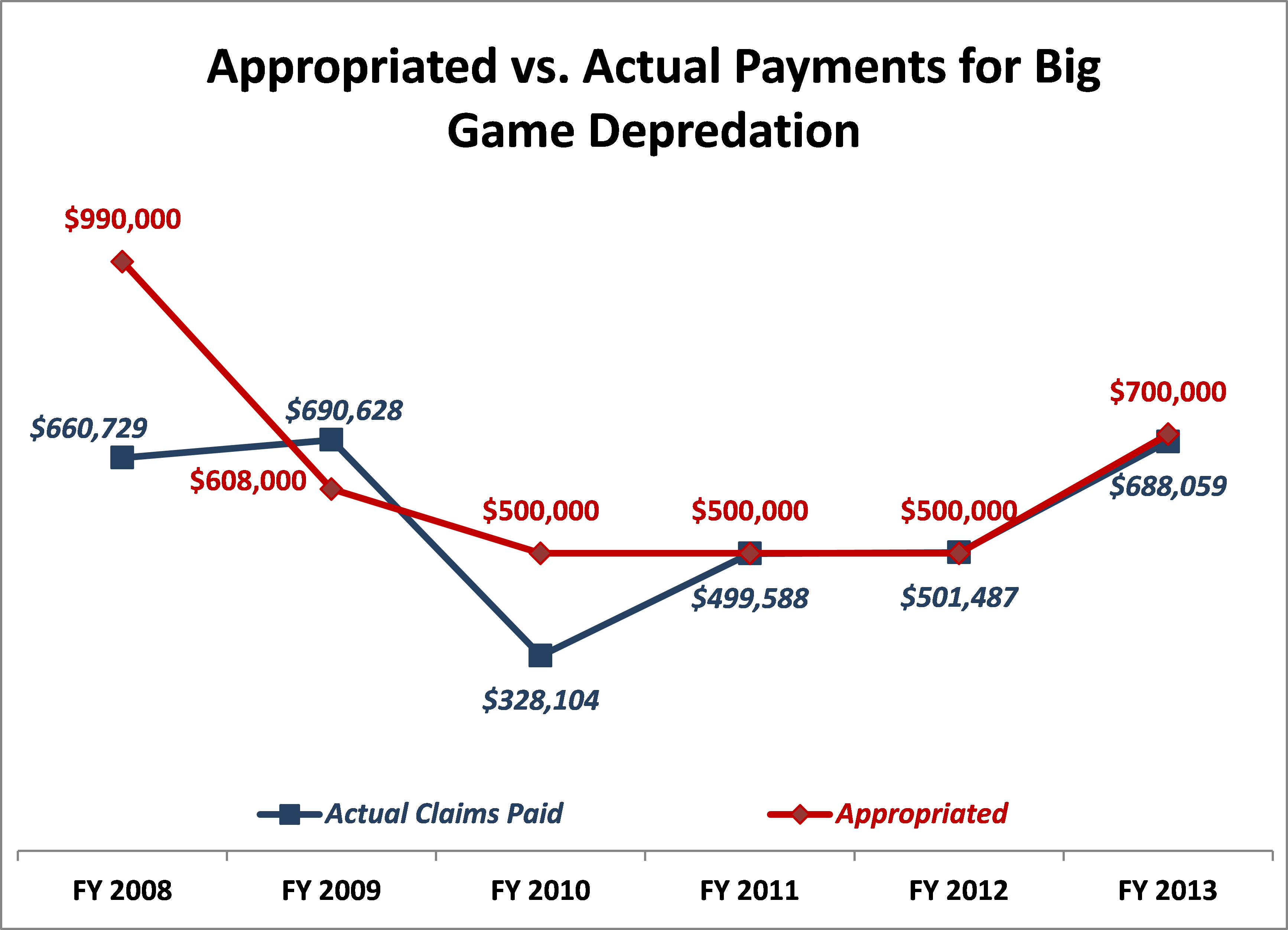Fiscal Highlights - November 2013
|
Landowner Payments for Depredation or Crop Loss -
Ivan D. Djambov ( If big game animals are damaging cultivated crops, fences, or equipment on private land, the landowner or lessee can receive compensation. The Division of Wildlife Resources (DWR) is responsible to contact the landowner or lessee within 72 hours and assess the reported damage. UCA 23-16-4 specifies the responsibilities of DWR to compensate for the damages. The statute directs the following to be considered when determining damage payment: 1. The extent of the damage; and 2. The revenue the landowner derives from: a. participation in a cooperative wildlife management unit; b. use of landowner association permits; c. use of mitigation permits; and d. charging for hunter access. According to statue, DWR compensation for damages to cultivated crops is to include: 1. The full replacement value in the local market; and 2. The cost of delivery of a replacement crop. The number of landowner claims for big game depredation has been increasing since FY 2008 (see figure below). Among the reasons for this increase, according to DWR, are drought conditions, cold winters, fires, etc. The data also shows that the cost per claim is increasing as well. DWR staff stated that one of the main reasons for the cost increase is the fact that the cost for replacement of these types of commodities has been increasing. For example, hay has almost doubled in price.
DWR receives an annual appropriation for such claims. Both the appropriated and actual amount for depredation payments were increased in FY 2013.
DWR If these trends continue, DWR will need to budget more money for depredation payments, or re-assess and improve the effectiveness of its damage-prevention approach. |
Capital Improvements Funding - Mark Bleazard Capital Improvements consist of projects costing less than $2,500,000 to improve an existing facili...Corrections Substance Abuse Treatment - Gary R. Syphus You may have already assumed that substance abuse treatment for inmates was beneficial; but, what i...Domestic Violence Shelters One-time Funding - Stephen C. Jardine It is anticipated domestic violence shelters will ask for ongoing funding in the 2014 General Sessi...In-depth Budget Review: Off-budget Funds and Operations - Russell T. Frandsen While Utah consistently ranks among the best managed states, legislators recognize that there is al...Internal Services Funds Review and Follow-up - Gary K. Ricks During the 2012 interim, the Office of the Legislative Fiscal Analyst issued a report and survey re...Landowner Payments for Depredation or Crop Loss - Ivan D. Djambov If big game animals are damaging cultivated crops, fences, or equipment on private land, the landow...Prison Relocation and Development Authority (PRADA) Update - Steven M. Allred The Executive Appropriations Committee recently received an update on PRADA's activities. At ...Student Enrollment in Utah's Public Schools Continues to Increase - Ben Leishman Utah schools enrolled 11,581 more students this fall than last year, for a total of 612,551. ...UCAT COE Standards - Angela J. Oh Every year, the Utah College of Applied Technology ((UCAT) produces an annual report. The report hi...Utah State University Delivers Education Statewide - Spencer C. Pratt Utah State University (USU) is the state's land-grant university, and as such, is committed to prov...What's a Dynamic Fiscal Note? - Thomas E. Young Have you ever wanted to look at the backward linkages and behavioral responses associated with your... |
Reports/Archive | Budget Process | Office Background | Who's Who | Organization Chart
Office of the Legislative
Fiscal Analyst
House Building, Suite W310
Salt Lake City, UT 84114
Phone (801) 538-1034 Fax (801) 538-1692

